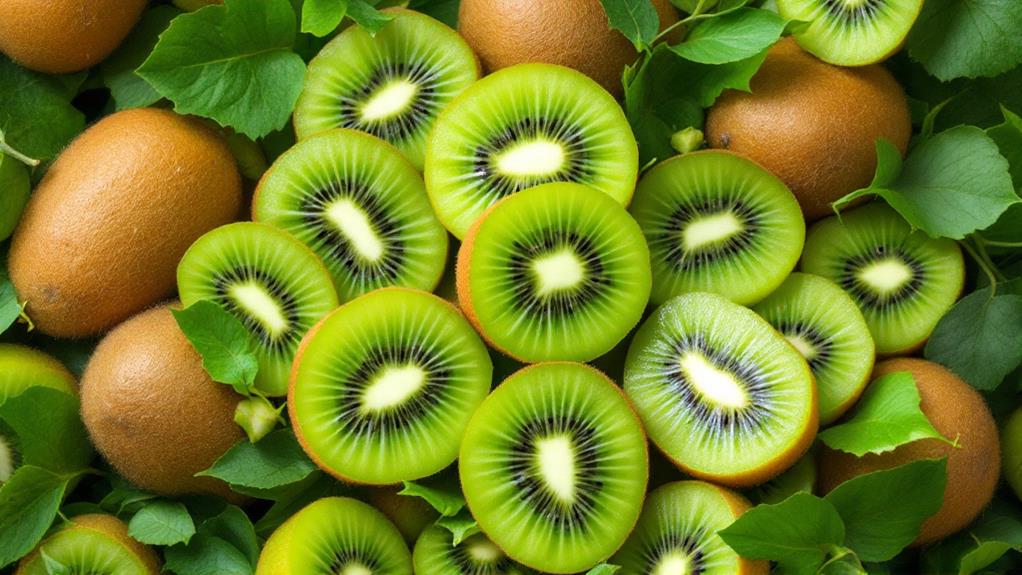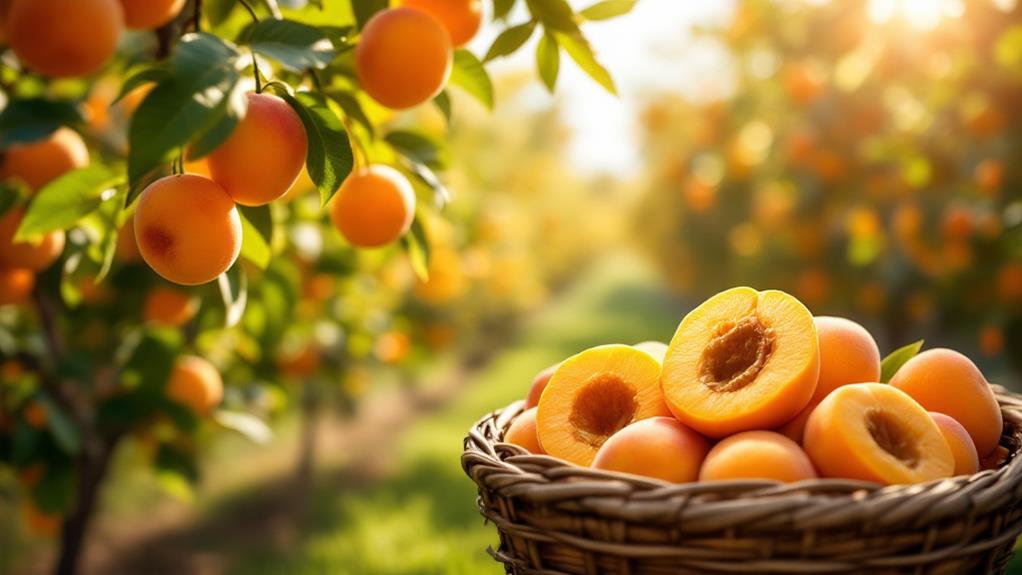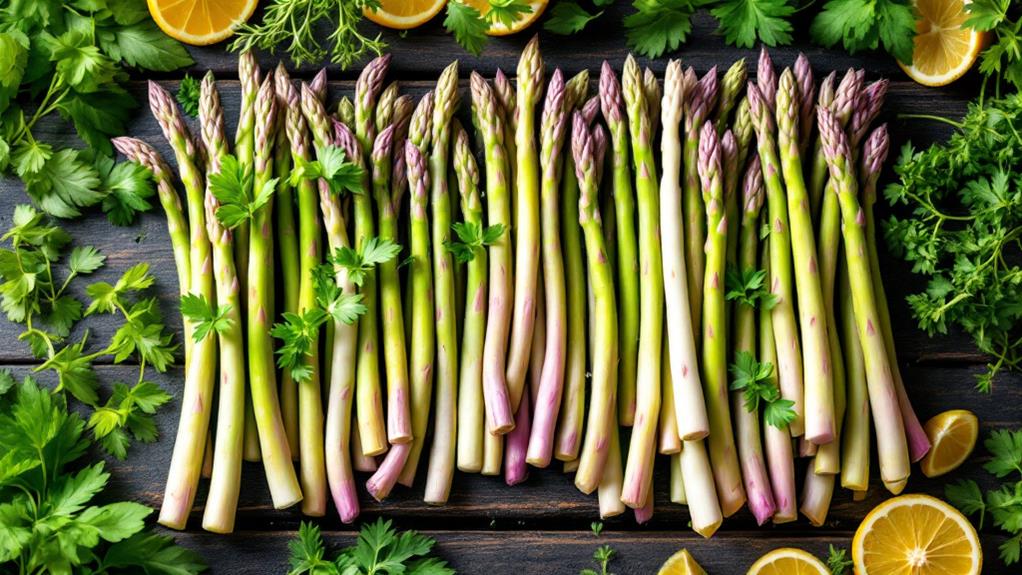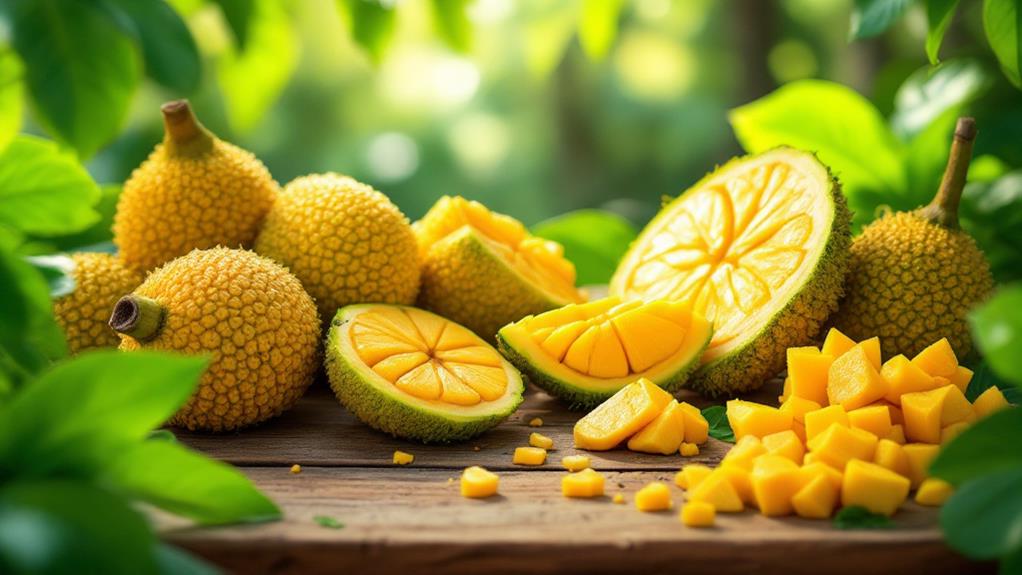Storing Produce for Longer Freshness: A Complete Guide
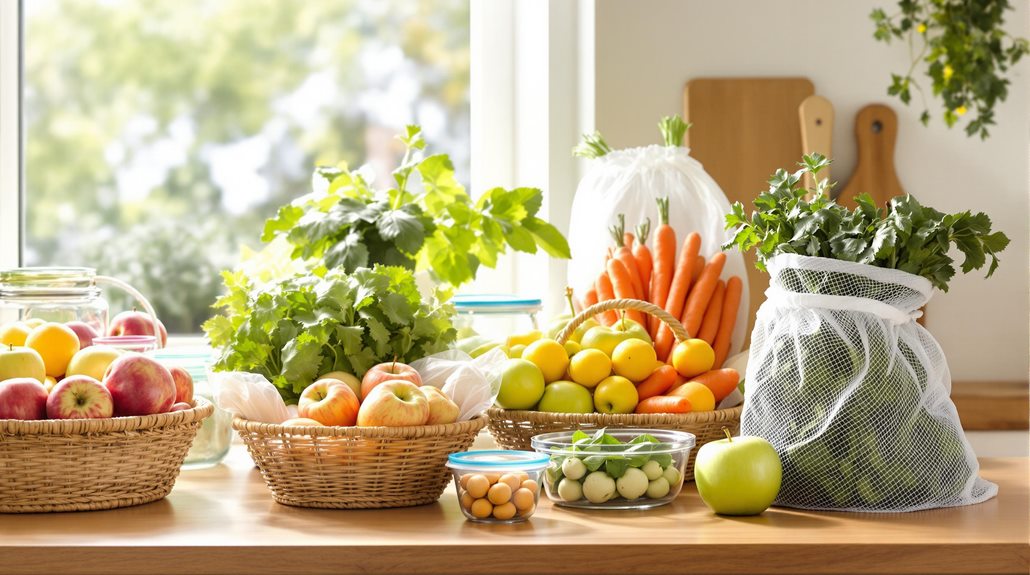
Keep your produce fresh longer by selecting fruits and vegetables carefully and storing them under ideal conditions. Choose firm apples and crisp leafy greens, and avoid produce with bruises or soft spots. Store vegetables at 45-50°F and fruits at 50-60°F, ensuring proper airflow to prevent mold. Keep potatoes and sweet potatoes in a cool, dark place. Use paper or mesh bags for mushrooms, onions, and garlic. Refrigerate apples and unripe mangoes, but let pears ripen at room temperature initially. Separate ethylene-producing items from ethylene-sensitive ones, like leafy greens, to prevent spoilage. There's more to learn about preserving freshness effectively.
Selecting Fresh Produce
Choosing the freshest produce is key to ensuring it stays crisp and delicious for as long as possible. When you're selecting fresh produce, focus on the quality of each item. For leafy greens, look for richly colored leaves that are crisp and free from limpness or yellowing. This indicates freshness and helps extend their shelf life. Root vegetables like carrots and beets should feel heavy for their size and be free of blemishes, ensuring they're of high quality.
When it comes to fruits, selecting the right ones can make a large difference in their longevity. Choose apples and pears that are firm and free from bruises. These characteristics suggest they're ripe and will last longer in storage. For winter squashes, opt for those with hard skins and a dull sheen, as this maturity means they store well for extended periods.
Always be vigilant for signs of spoilage, such as soft spots or mold, when selecting produce. These issues can greatly affect the quality and longevity of your fresh items, so avoiding them will help keep your produce fresher and more enjoyable for a longer time.
General Storage Conditions
In relation to storing produce, understanding the general storage conditions can greatly extend its freshness and quality. Pay attention to temperature, as most vegetables thrive at 45-50°F, while fruits prefer slightly warmer conditions of 50-60°F. This helps maintain peak freshness. Ethylene gas, produced by certain fruits like apples and bananas, accelerates ripening, so store them away from ethylene-sensitive items like leafy greens. This separation is vital in your produce storage strategy.
Airflow plays a significant role, preventing moisture buildup and mold. Avoid tightly packing your produce and use paper bags for items like mushrooms to guarantee peak airflow. Refrigeration benefits most fruits, but be mindful of root vegetables like onions, which should be kept in cool, dark places to avoid spoilage.
Humidity levels are another significant factor. Leafy greens require slightly damp conditions to stay crisp, while onions and garlic need dry, well-ventilated areas to prevent spoilage. By managing these conditions, you can prolong the life and quality of your produce. Remember, a little planning and attention to detail in produce storage can make a big difference in how long your fruits and vegetables stay fresh.
Potatoes and Sweet Potatoes
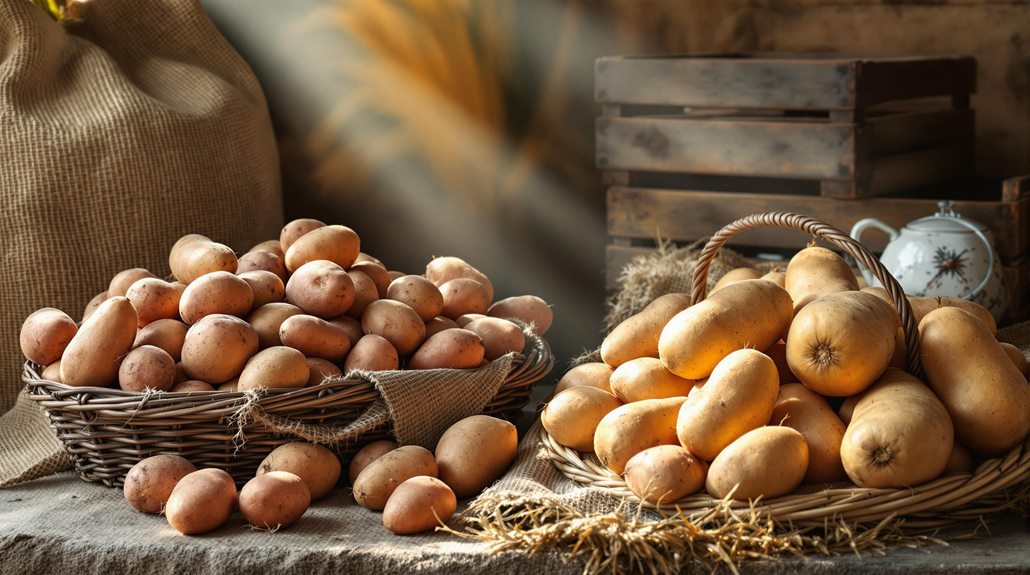
While storing potatoes and sweet potatoes, it is essential to provide the right conditions to maintain their freshness and quality. You should store them in a cool, dark place with good air circulation. For potatoes, aim for temperatures between 40-50°F to prevent spoilage and maintain their texture. Sweet potatoes also thrive in a similar environment, but remember they have a shorter shelf life and should be used within 1-2 weeks.
It's significant to avoid refrigerating potatoes, as the cold can convert their starches into sugars, which affects both flavor and texture. High humidity levels are beneficial, but make sure to keep potatoes and sweet potatoes away from ethylene producers like onions and bananas. These can cause premature sprouting, impacting their freshness.
If you notice your potatoes have sprouted, don't worry. They are still safe to eat as long as they're firm. Just cut off the sprouts before cooking. Keeping these tips in mind will help you store both potatoes and sweet potatoes successfully, ensuring they remain fresh and ready to improve your favorite dishes.
Storing Root Vegetables
After mastering the art of storing potatoes and sweet potatoes, let's investigate how to keep other root vegetables fresh for longer. Root vegetables like carrots and beets thrive in a cool, dark place with temperatures between 40-50°F for ideal longevity. They can last up to three months if stored correctly. Ensuring high humidity and good air circulation is vital for preventing spoilage. You might want to try using perforated plastic bags, which help maintain these conditions effectively.
When storing root vegetables, avoid refrigerating potatoes, as cold temperatures can alter their taste and texture. Instead, keep them away from ethylene-producing items like onions and bananas to extend their shelf life. For carrots and beets, removing leafy tops before storage is important, as this helps prevent moisture loss and prolongs freshness.
If you're looking to refrigerate root vegetables like carrots for longer shelf life, place them in plastic bags to maintain moisture. Sprouted potatoes are safe to eat if they remain firm; simply cut off the sprouts before cooking. With these tips, your root vegetables will stay fresh and delicious for as long as possible.
Onions and Garlic Tips
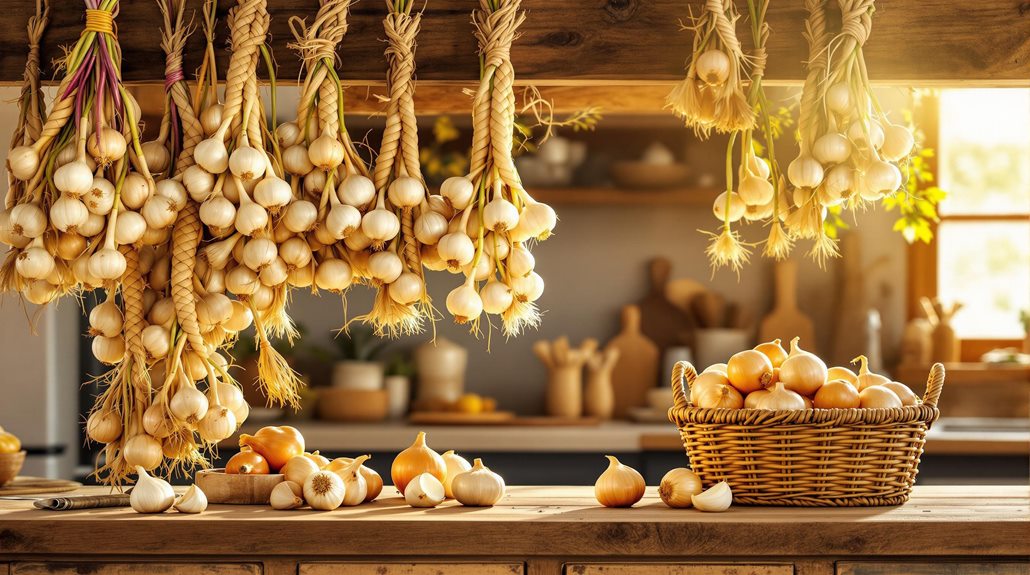
Onions and garlic are best kept in a cool, dark place with good ventilation to avoid spoilage and sprouting. Aim for temperatures between 32-40°F, where moisture is minimized. Low humidity is key, so avoid refrigerating them, as it can lead to decay. Instead, store them in well-ventilated containers or mesh bags. This setup guarantees air circulation, reducing mold risks.
For onions and garlic that have been cut or are leftover, wrap them tightly in plastic wrap or place them in sealed containers. Once refrigerated, these can last up to a week. It's essential to know that sprouting doesn't mean your onions and garlic are spoiled. Simply trim the green shoots, and they're ready to use.
Here's a quick storage guide:
| Storage Item | Best Practice |
|---|---|
| Whole Onions | Cool, dark place, mesh bags for ventilation |
| Whole Garlic | Similar to onions, avoid moisture exposure |
| Cut Onions | Wrap in plastic, refrigerate, up to one week |
| Sprouted Onions | Trim shoots, use as normal |
Keep these tips in mind, and you'll extend the freshness of your onions and garlic considerably!
Fruit Storage Techniques
Having secured the best methods for storing onions and garlic, let's turn our attention to fruit storage techniques. To keep your fresh fruits and vegetables at their best, it's essential to know how to store produce correctly. Apples, for instance, should be kept in plastic bags in the refrigerator. This helps maintain their crispness, as they tend to degrade quickly at room temperature due to ethylene gas.
For unripe mangoes, store them at room temperature on a towel-lined tray. Once they're ripe, you should refrigerate them to prolong freshness for a few days. Citrus fruits like lemons and limes can last up to a week at room temperature, but if you refrigerate them loosely, you'll extend their freshness considerably.
Pears should be left at room temperature until ripe. When they reach the desired ripeness, refrigerating them can maintain their quality for up to three weeks. Berries need special attention to air flow. Store them in their original containers or in covered ones to enhance shelf life and reduce spoilage.
Winter Squash Storage
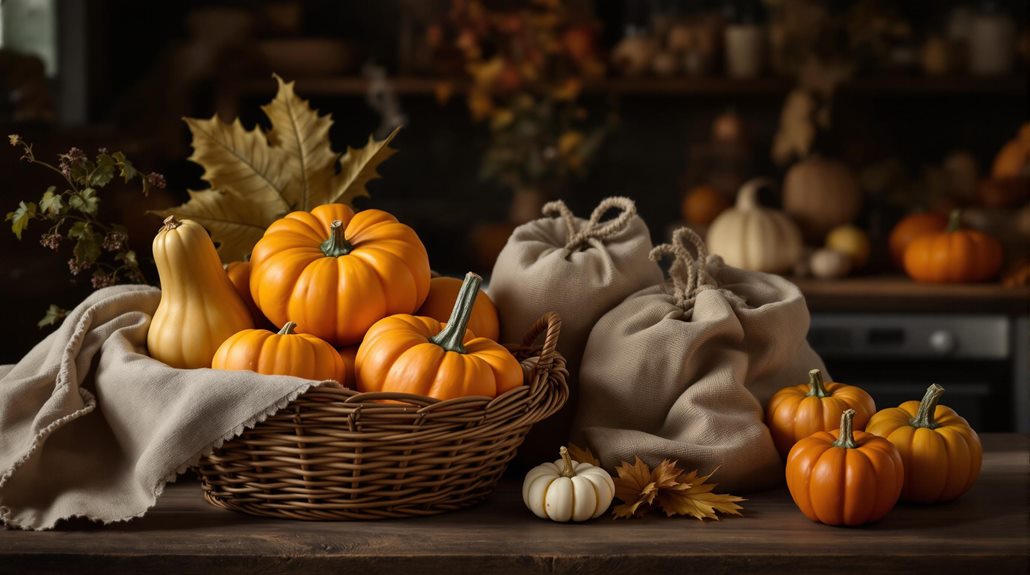
In regard to storing winter squash, keeping them at room temperature in a cool, dry place is key to prolonging their shelf life. You should avoid placing them near ethylene-producing fruits like apples or bananas, as these can accelerate spoilage. Thick-skinned varieties such as cheese pumpkins and hubbards can last up to six months, while thinner-skinned types like acorn should be consumed within 1-2 months.
Place your winter squash off the floor to guarantee proper air circulation, which helps prevent moisture buildup and potential spoilage. Regularly inspect your squash for any soft spots or blemishes. If you notice any, you can treat the affected areas with a gentle bleach solution to halt the spread of spoilage.
For unused portions of winter squash, peel them and store in sealed containers in the refrigerator, where they'll stay fresh for up to a week. This method prevents moisture loss and keeps them from absorbing odors from other foods. By following these storage tips, you'll optimize the shelf life of your winter squash and enjoy their delicious flavors for a longer period.
Leafy Greens Care
After ensuring your winter squash stays fresh, it's time to focus on keeping leafy greens crisp and delicious. Start by storing your leafy greens unwashed in the refrigerator. This helps maintain their natural crispness. Use a zip-top plastic bag with a paper towel inside to absorb excess moisture. This setup is essential to keep your greens crisp and fresh longer.
Hardier greens like kale can last up to two weeks, but tender greens such as arugula need to be eaten quickly due to their fragility. Always remove any wilted or brown leaves when you initially bring them home to prolong the freshness of your leafy greens. If you notice wilting in lettuce, trim the root, place it in water, and cover it loosely with plastic for a few hours to revive it.
For leftover greens you can't use within ten days, consider blanching and freezing them. This method preserves both flavor and texture for up to six to eight months, ensuring you can enjoy your greens even when they're out of season. Follow these tips to keep your leafy greens fresh and inviting for every meal.
Handling Peppers and Chiles
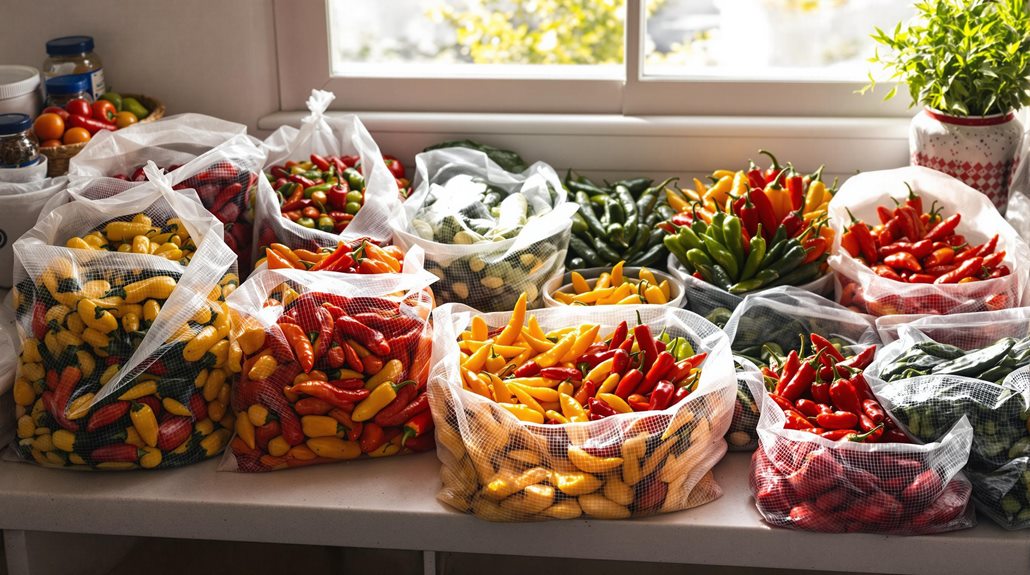
Storing peppers and chiles properly can greatly extend their freshness and flavor. To optimize the lifespan of bell peppers, keep them in plastic bags and place them in your refrigerator's crisper drawer. This method guarantees they maintain their freshness and crunchiness for up to two weeks. Make certain to keep them away from ethylene-producing fruits to prevent premature spoilage.
For fresh chiles, you have a few options. You can store them whole or sliced in the refrigerator, or even pickle them in juice or vinegar to extend their shelf life. If you're looking to preserve them for longer, consider freezing. Wash and slice the peppers, then spread them on a baking sheet to freeze before transferring them to freezer bags. Stored properly, they can maintain quality for up to six months.
Regularly check your stored peppers and chiles for any signs of spoilage or soft spots. Identifying these early helps you use or discard them promptly, preventing them from affecting other produce. By following these steps, you'll guarantee your peppers and chiles stay fresh and flavorful for as long as possible.
Ethylene Sensitivity Guide
Understanding ethylene sensitivity is crucial for maximizing the freshness of your fruits and vegetables. Ethylene gas, a natural plant hormone, speeds up ripening and can lead to quicker spoilage. To guarantee longer freshness, you need to recognize both high ethylene producers and ethylene-sensitive produce. Some high ethylene producers like apples, bananas, tomatoes, and avocados should be stored away from those sensitive to ethylene gas, such as leafy greens, potatoes, and carrots. By organizing your produce storage this way, you can reduce waste and keep fruits and vegetables fresher.
Here's a quick guide to help:
| High Ethylene Producers | Ethylene-Sensitive Produce | Storage Tips |
|---|---|---|
| Apples | Leafy Greens | Separate containers |
| Bananas | Potatoes | Store root vegetables |
| Tomatoes | Carrots | Use different drawers |
| Avocados | Berries | Maintain separation |
Storing high ethylene producers in separate containers or drawers prevents them from affecting ethylene-sensitive items, keeping your produce fresh longer. So, when you store root vegetables or leafy greens, make certain they're away from ethylene-rich fruits. This method not only guarantees longer freshness but also helps you reduce waste, making your kitchen more efficient.

